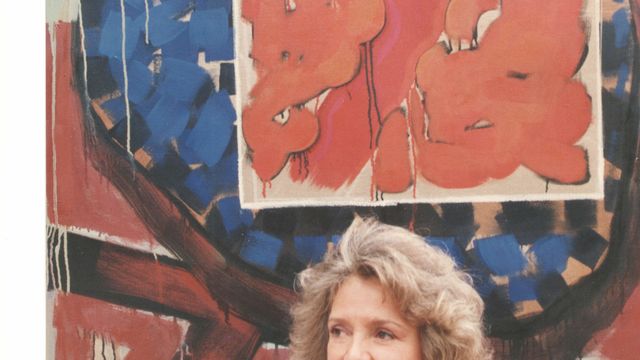
Margot Römer
Born in 1938 in Caracas, Margot Römer studied painting, drawing, and printmaking intermittently for more than twenty years (1953–74) with various teachers, including the Chilean artist Armando Lira (1903–1959), and at several institutions, including Atelier Lucio Rivas, Taller Libre de Arte, Escuela de Artes Visuales Cristóbal Rojas, Centro Gráfico del Inciba (Instituto de Cultura y Bellas Artes), and Taller Luisa Palacios, all in Caracas. In the 1970s and early 1980s Römer was not only an artist but also a professional pilot, teacher, and cultural leader in her support of experimental art.
In 1972 she began working in a conceptual language involving text and the use of domestic objects to create direct references to the human body. In 1972 her work was included in two seminal group exhibitions in the history of conceptual art in Caracas: Las sensaciones perdidas del hombre at Sala Mendoza and Para contribuir a la confusión general at Ateneo de Caracas. In that year she participated in the 2nd Salón Nacional de Jóvenes Artistas de Maracay, where she earned an honorable mention for her work El aparato reproductor de la mujer (Woman's reproductive system), in which words describing the female reproductive system are inscribed on a door and a phallic-shaped cactus is placed in the door's window. This work represents Römer's incisive use of objects, language, and irony to address issues related to women, domesticity, sensuality, and the human body. In 1973, together with a group of artists, she represented Venezuela at the 12th Bienal de São Paulo with the collective work Piel a piel (Skin to skin), a large environment of six spaces, each exploring a specific tactile sensation.
In 1977 Römer was the first woman artist in Venezuela to obtain the Premio Arturo Michelena, the most important art prize in the country, with a diptych titled Canto a mi misma (Song to myself), featuring cropped and enlarged urinal parts—toilets and urinals would appear as recurring motif in her work throughout the 1970s—alluding to the sensuality of the human body and the interface between the intimate and the public. In 1976 she joined the curatorial team that organized the opening of the Galería de Arte Nacional in Caracas, and later, also in 1976, she was chosen to be director of Sala Mendoza, an important private art foundation in Caracas, where she promoted the most radical experimental art of the time. Although she chose not to define herself as a political artist, after the late 1970s Römer developed works incorporating the motif of the Venezuelan flag to make critical comments about violence and corruption. In the late 1980s she explored ecological preoccupations.
Toward the end of her life her work became increasingly abstract. In 2000 she won the Premio Nacional Armando Reverón for visual arts and obtained a degree in education from the Universidad Nacional Experimental Simón Rodríguez and studied theology as a postgraduate student at the Universidad Católica Andrés Bello, both in Caracas. Margot Römer died in Caracas in 2005.
—Cecilia Fajardo-Hill
Selected Solo Exhibitions
1976 Desde el taller de Margot Römer, Estudio Actual, Caracas
1987 La estrella es la estrella, Museo de Bellas Artes, Caracas
1991 Margot Römer: Del cielo a la tierra, Sala Mendoza, Caracas
1996 Margot Römer: Balance general, Museo de Arte Contemporáneo de Caracas Sofía Imber
2001 Margot Römer: Ortogonías, Museo Alejandro Otero, Caracas
Selected Bibliography
Guevara, Roberto. Margot Römer: Balance general. Caracas: Museo de Arte Contemporáneo de Caracas Sofía Imber, 1996.
Jiménez, Ariel. Margot Römer: Del cielo a la tierra. Caracas: Sala Mendoza, 1991.
La Rocca, Graziana. Margot Römer: Series lenguajes plásticos; Artistas de hoy y mañana. Vol. 2. Caracas: Colegial Bolivariana, 2001.
Rojas, Fernando. Colección arte venezolano: Margot Römer. Caracas: Ministerio del Poder Popular para la Cultura, 2008.
Römer, Margot. La transestética postmoderna. Caracas: Fundación Banco Mercantil, 2003.


